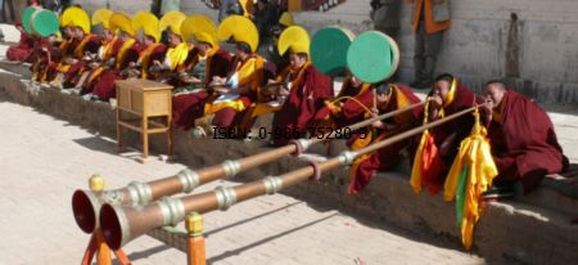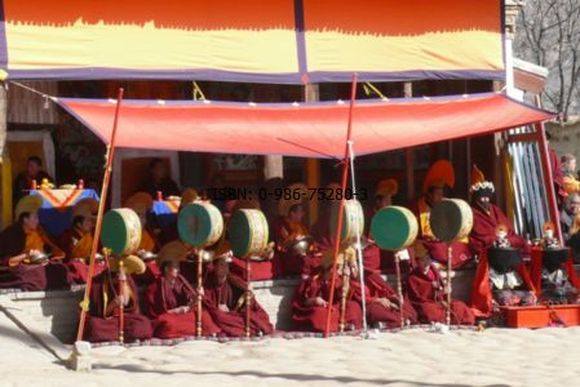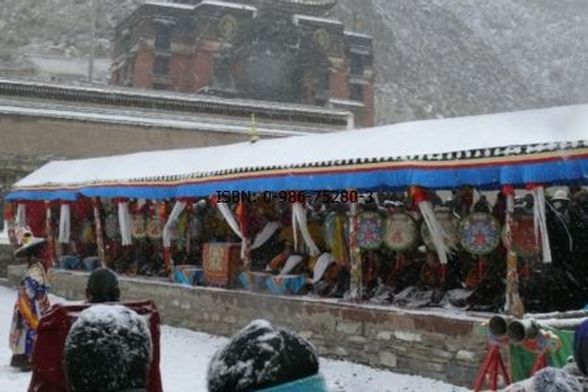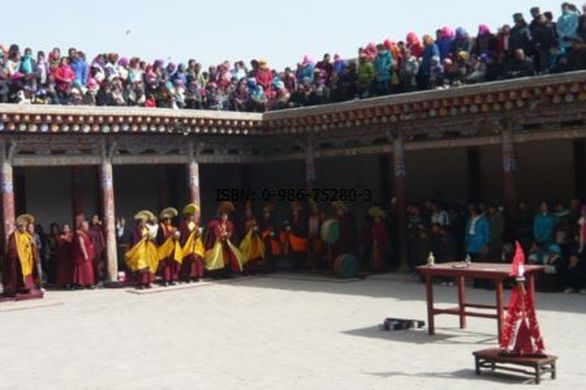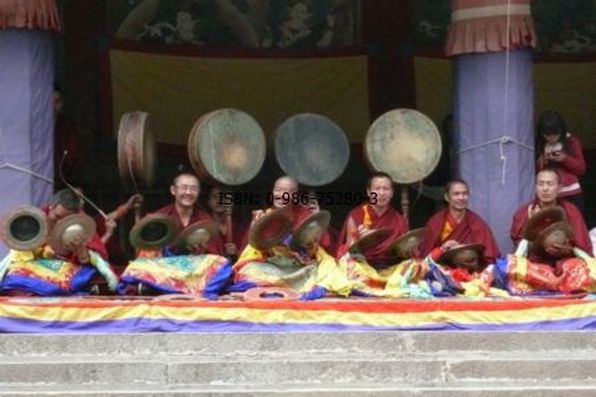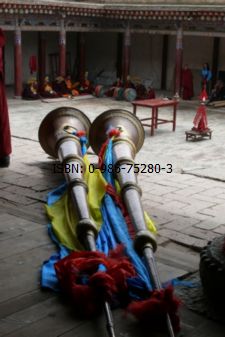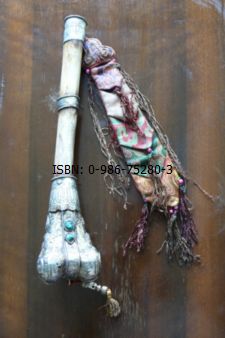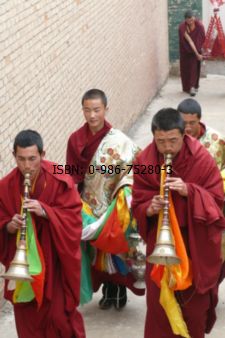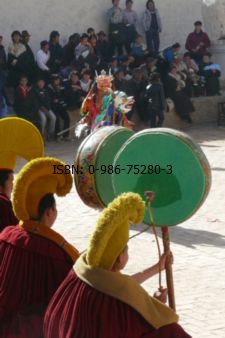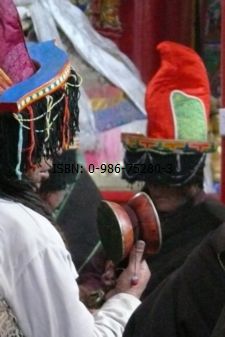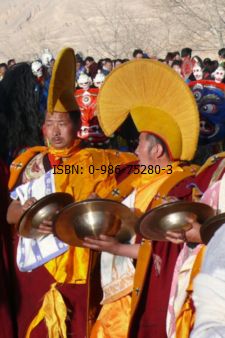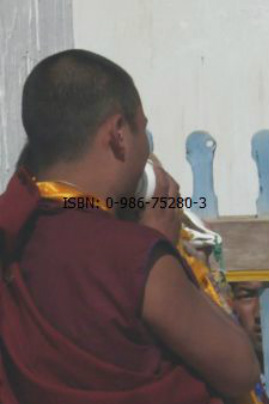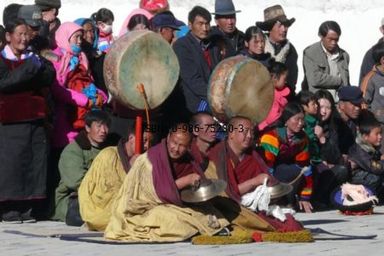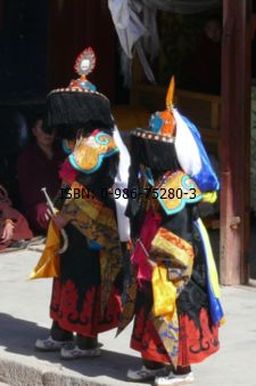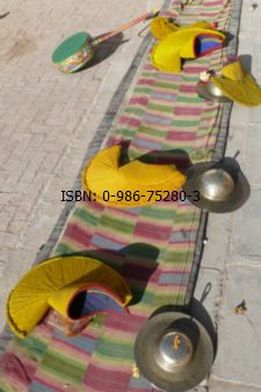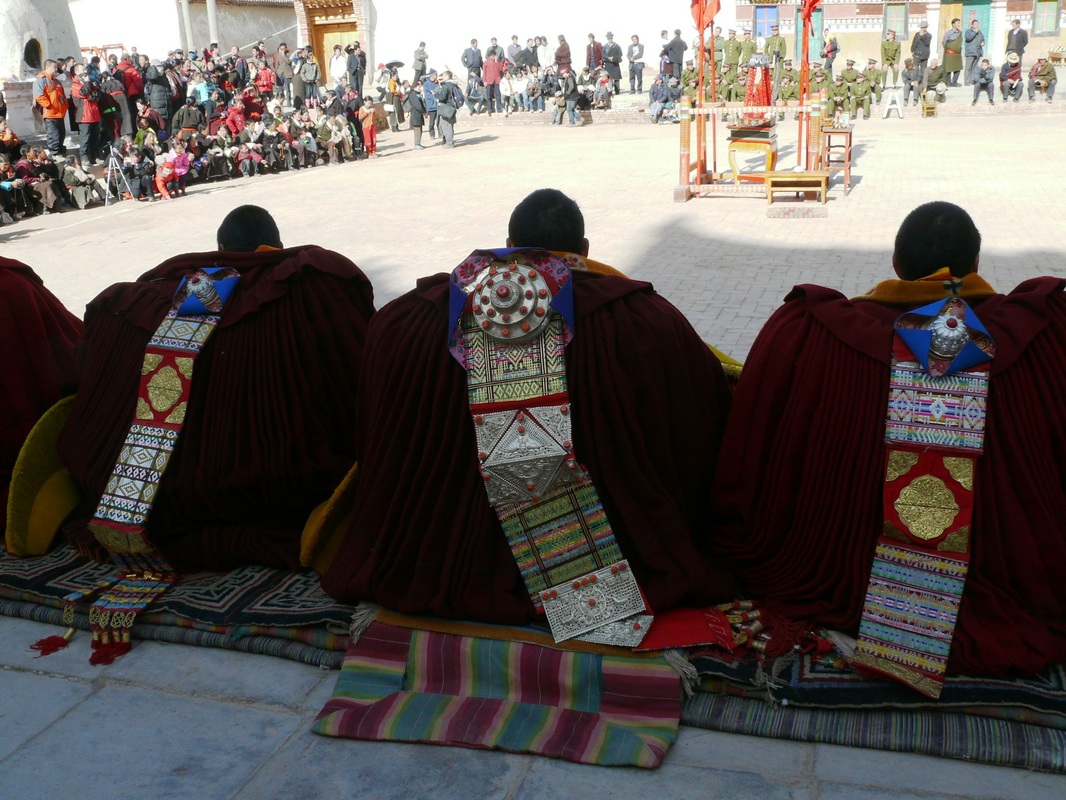Orchestras and their instruments
Just as costumes and masks are important to the Cham dance, so is music. Without music the Wrathful Deities are not able to move in unison and together conjure up the forces necessary to capture and destroy evils. Music is the catalyst that makes Cham powerful, it is the lubricant that joins energy with purpose - it guides and energizes the dancers in their display of the power of Tibetan Buddhism.
MUSICAL Instruments ...
Orchestras vary in size as one might expect, depending on the wealth of the importance and wealth of the monastery. Instruments may include cymbals, drums and horns, some big, some small. The number of musicians will also very. Sometimes, but not often, a small group (quartet or sextet) will move away from the main orchestra and play separately during a specific part of the Cham dance.
|
|
|
|
|
|
Rol Pon in the center. He is also the main cymbalist
and the Chant Master.
and the Chant Master.
